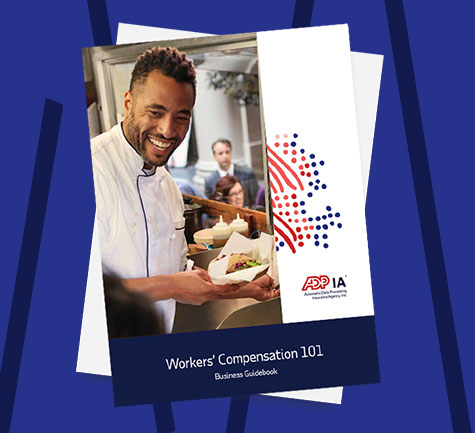Most employers understand that workers’ compensation insurance is a required cost of doing business. But just how much is that cost and how is workers’ comp calculated? The answer often puzzles employers because insurance premiums can vary for many reasons. And if their workers’ comp calculation is incorrect, it can lead to expensive surprises during annual audits.
Table of Contents
What factors into workers’ comp calculations?
When calculating workers’ comp premiums, employers and insurance carriers consider the following:
- Classification of employees based on job duties
- Classification of independent contractors who are not self-insured
- Total payroll for each classification
- Classification of the business or industry
- The state where coverage is issued
- Previous loss or claims experience
- Adjustments, e.g., possible credits for work safety programs
How to calculate workers’ compensation cost
- Classify business risk
Insurance companies assign employers a classification code based on the risk of injury in their particular industry. The more hazardous the industry, the higher the insurance premiums.
Employees generally receive the same classification code as their employer because it’s assumed that workers may fill in for one another at times and, thus, everyone shares the same risk. There are, however, exceptions. For instance, most employees actively engaged in construction may be assigned one code. Another employee working for the same business in a strictly clerical role may be assigned a different, less expensive code. - Estimate annual payroll
Insurance companies multiply the rate that corresponds to the employer’s classification code by the expected payroll in increments of $100 for the coming year. The workers’ comp calculation looks like this:
Carrier rate x Payroll (Per $100) = Premium
Estimating payroll with any degree of certainty is difficult, which is why states and insurance carriers require audits when the policy expires. - Conduct year-end audits
Within 30 to 60 days of a workers’ comp policy expiring, insurance companies will audit an employer’s payroll. They compare the estimate from the beginning of the term to the actual payroll numbers. If actual payroll is lower than the estimated amount, insurance companies will issue a refund. But if the actual payroll is higher than the estimate, employers must pay the difference.
How can employers reduce the cost of workers' compensation coverage?
Incorrect worker’s comp calculations can affect an employer’s cash flow. Overpaying for a policy is money that could have been invested into the business, while underpaying may result in an unexpected bill at year’s end. Here are some tips that can help employers avoid either of these two scenarios:
- Check insurance premiums regularly
There are some tell-tale signs that a premium may be set incorrectly. Employers should look for:- Changes in payroll, like new hires or departures
- Significant, unexplained changes in premium bills
- Improper charges for subcontractors who have their own coverage
- Review job classifications
Common misclassifications include:- Clerical employees working in hazardous environments
- Employees that fill in for other business roles
- Seasonal hires listed as permanent employees
- Full-time employees who switch to part-time
- Run payroll correctly
Any mistakes with payroll will be reflected in workers’ compensation premiums and the year-end audit. Employers should review their payroll reports regularly to ensure that all data is being correctly inputted and processed. - Consider a “pay-as-you-go” solution
Pay-as-you-go solutions integrate payroll and workers’ comp so employers can use real-time payroll data and carrier rates to calculate their premiums more accurately. In turn, they may be able to reduce or eliminate variances during audits and improve their cash flow.
Frequently asked questions about workers’ comp calculations
How much does workers’ comp insurance cost?
Workers’ comp premiums are determined based on several variables, including an employer’s industry, classifications, total payroll, claims history and adjustments, if applicable. The state in which coverage is issued also impacts the total cost.
How does payroll affect your workers' comp rate?
Insurance carriers apply employers’ class code rates against their expected payroll (per $100). Therefore, if payroll is estimated incorrectly, workers’ comp premiums will also be incorrect.
What are workers' compensation class code rates?
Class codes signify the risk of injury in a particular industry. Each one corresponds to a workers’ comp rate. As such, businesses that operate in hazardous environments generally pay higher rates than employers who have minimal safety risk.
What is an experience modification rate?
Experience modification adjusts the workers’ comp rate based on an individual employer’s claims history. In general, as the number of claims increase so too do the premiums.
This article is intended to be used as a starting point in analyzing how to calculate workers’ comp and is not a comprehensive resource of requirements. It offers practical information concerning the subject matter and is provided with the understanding that ADP is not rendering legal or tax advice or other professional services.




